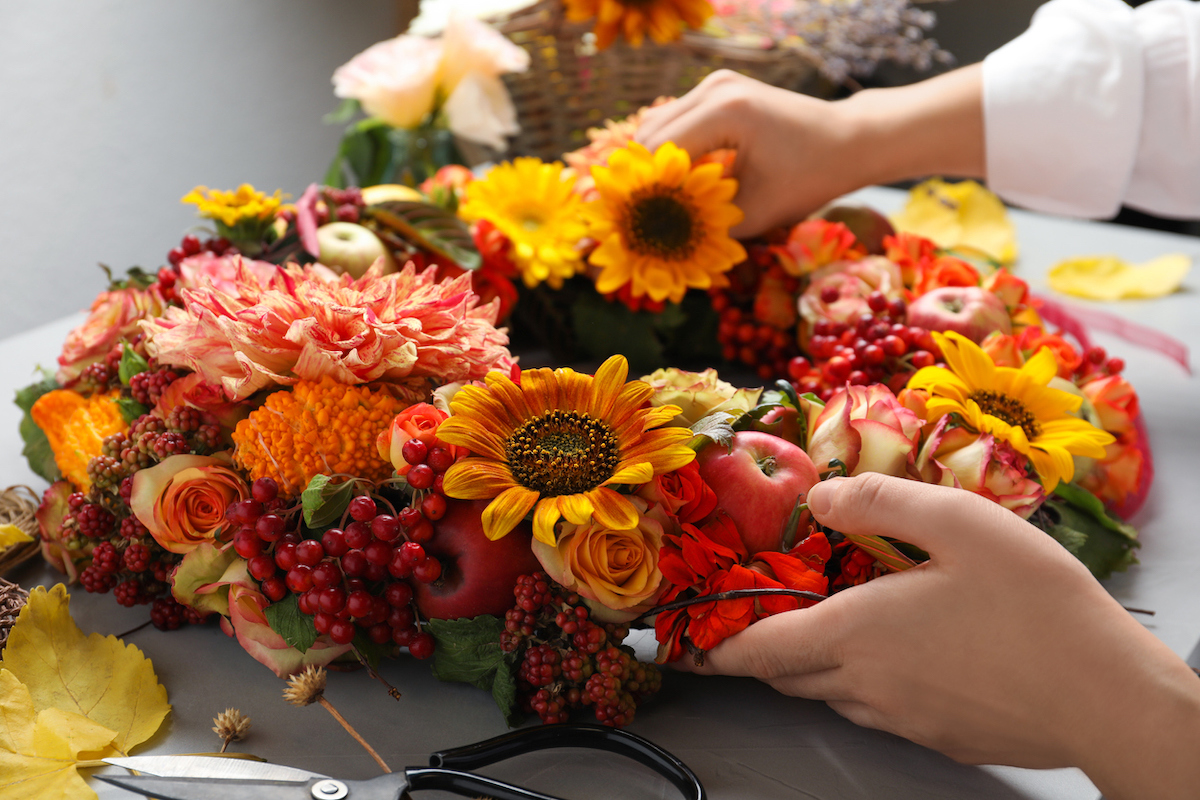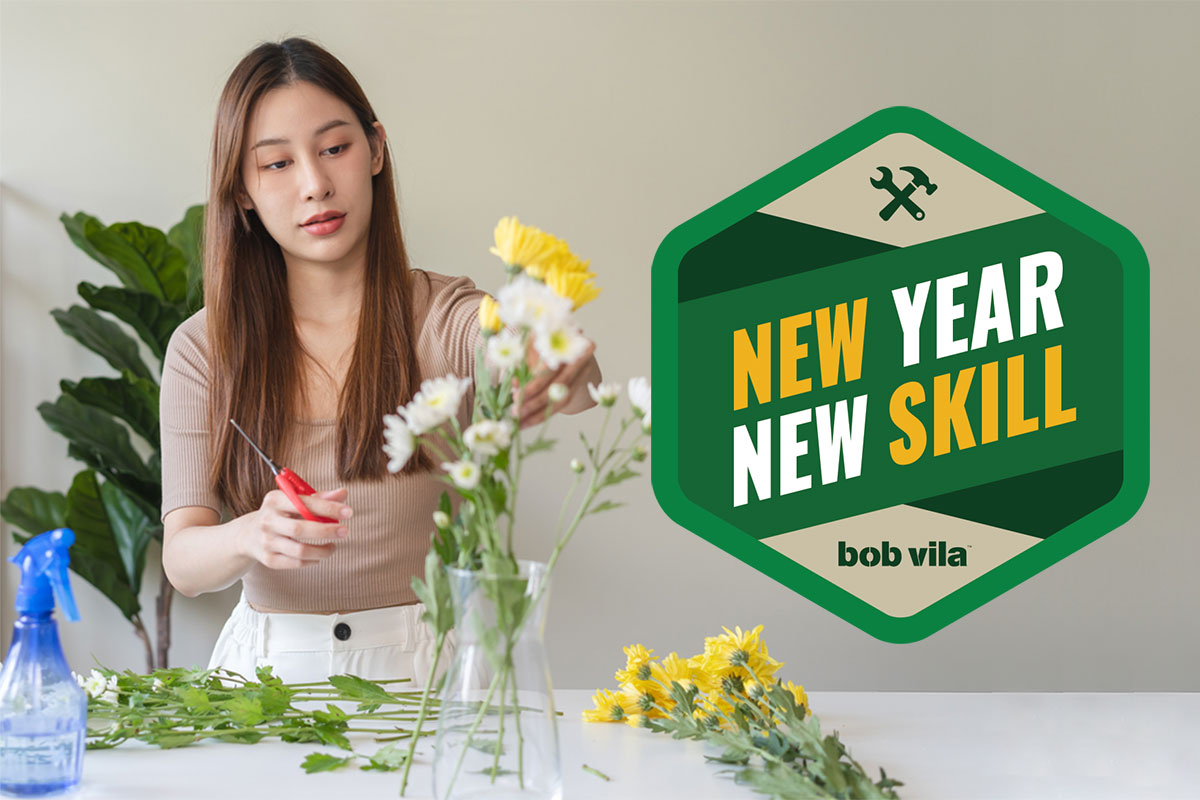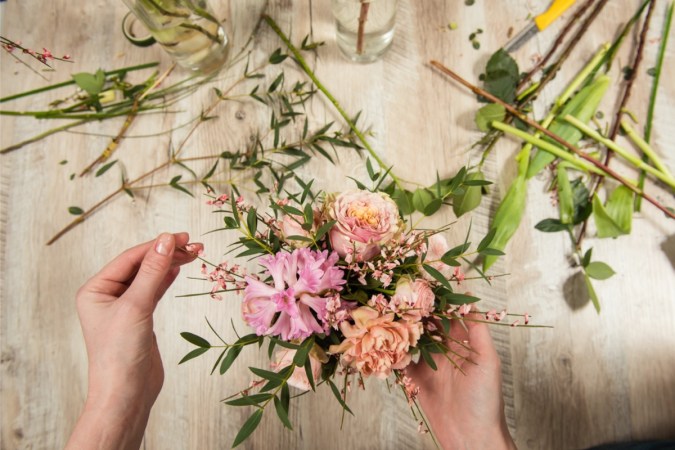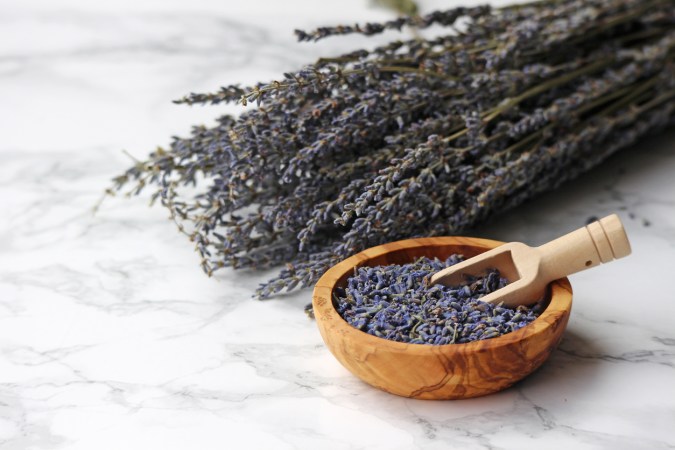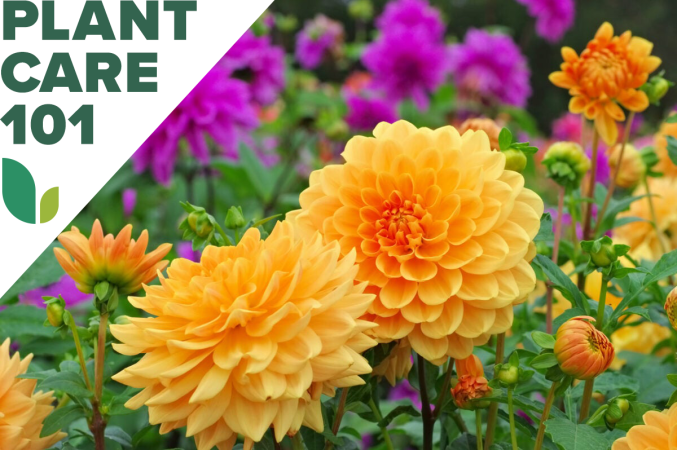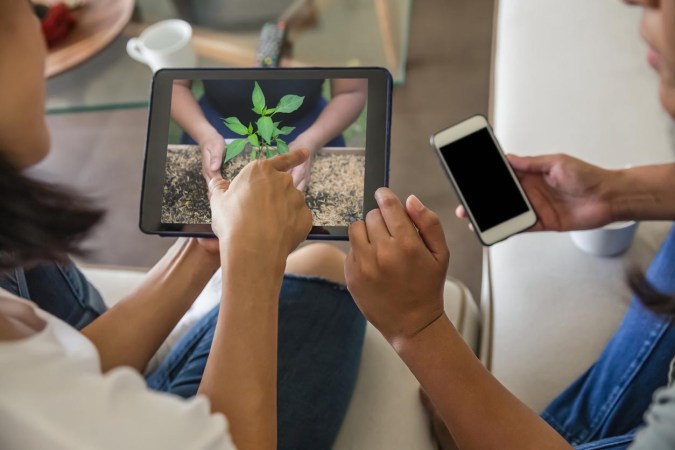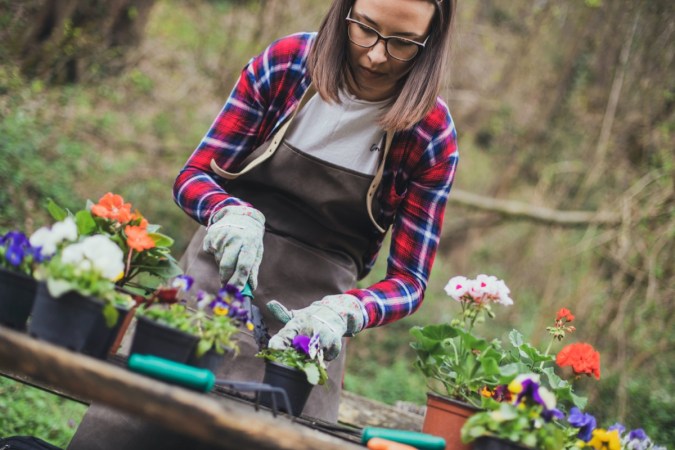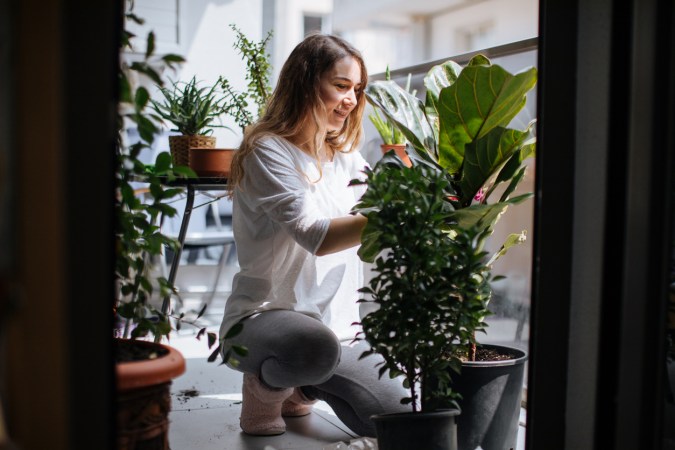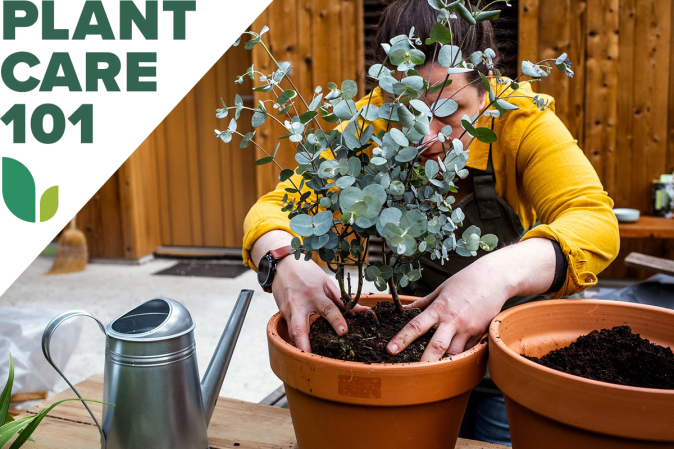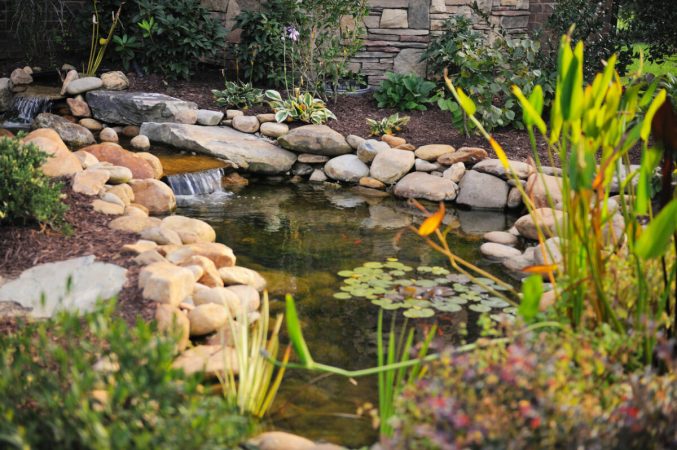We may earn revenue from the products available on this page and participate in affiliate programs. Learn More ›
Learning how to be your own florist will save you money and provide a creative outlet for your “budding” talent. Arranging flowers requires an eye for color, scale, and design, along with some basic plant care knowledge. Whether you want to take advantage of your own cutting garden or you’ve purchased flowers, you can create bespoke arrangements perfectly suited for your home.
Bob Vila’s library of tutorials will teach you the basics of floral design. You’ll learn tips on choosing long-lasting blossoms and how to combine flowers and foliage in eye-catching arrangements.
The following guide will help you gain experience as a DIY florist; and as you practice your new skill, your home will be filled with the beauty of nature, enhanced by your individuality.
Nurture Your Green Thumb
If you really want to beat florist prices, try growing your own flowers. They will bring you pleasure in the garden and provide the freshest material you need to design exquisite floral arrangements.
Some flowers are better suited for floral arrangements than others. Learning which flowers flourish in your growing zone, how to care for them, and when to harvest them will improve your arrangements. If you don’t have the space for a cutting garden, take advantage of flowers that prosper in containers.
The articles below will guide you in your flower selection by providing information on each plant’s needs, bloom time, and other characteristics. You may even discover some new cultivars that you’ll want to include in your designs.
FOR MORE ON GROWING YOUR OWN FLOWERS:
➤ 10 Things Every New Gardener Needs to Know
➤ How to Grow a Cut Flower Garden at Home
➤ 23 Annual Flowers With Personality
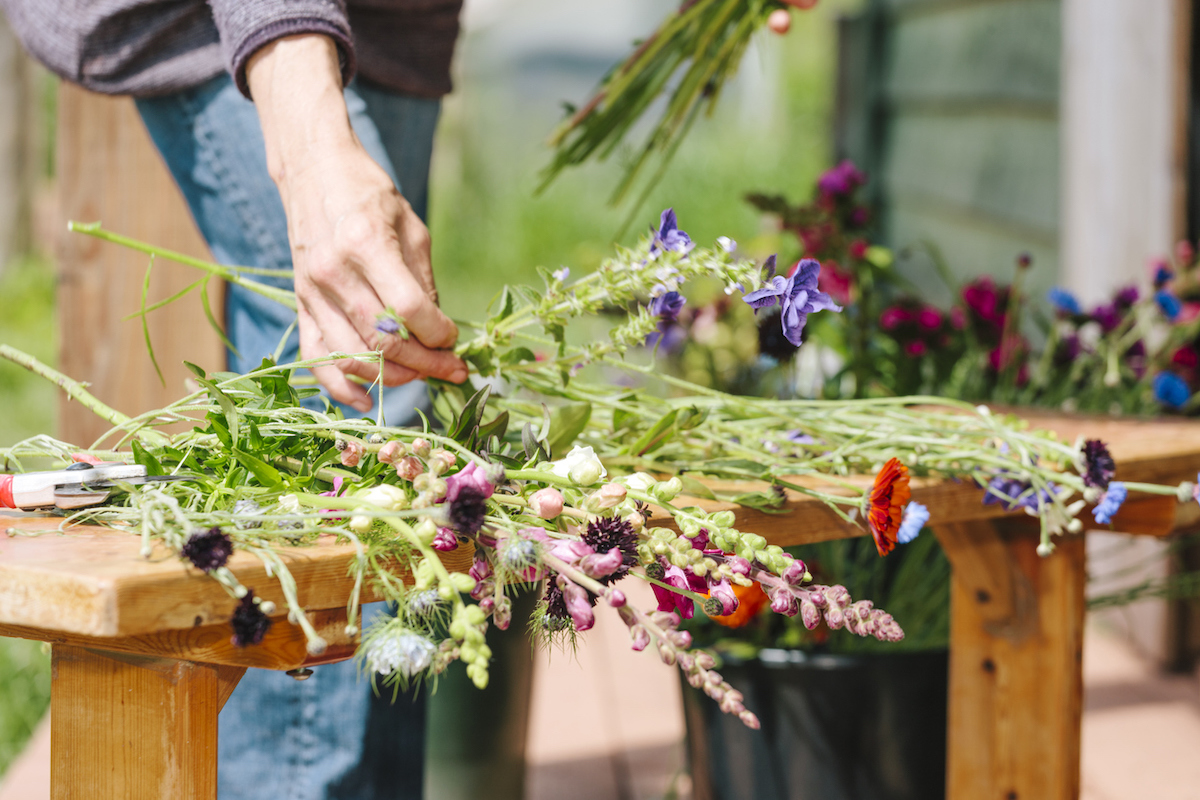
Gather Essential Tools of the Trade
Using the right tools for any job improves the end result. It’s no different with floral design. Arranging flowers involves more than merely sticking stems in a vase. The right tools can make your design look better and last longer.
Whether you’re stripping thorns from roses or cutting stems on daisies, professional florist tools will provide a higher quality arrangement. The more elaborate your arrangement, the more sophisticated tools are required. We’ve provided a list of some of the most-used florist tools you’ll find helpful as you learn to arrange flowers.
- Floral knife: A sharp floral knife is one of the most frequently used tools by florists; it can cut flower stems at an angle for best water absorption.
- Flower thorn strippers: This simple tool resembling a staple remover easily strips thorns and leaves from flower stems.
- Floral scissors: Sturdy floral scissors or shears can cut precisely through tough stems and small branches.
- Floral foam: Easily cut to size, floral foam stabilizes vessels, keeps flowers hydrated, and allows accurate placement of stems.
- Waterproof tape: Waterproof floral tape can hold floral foam or flower stems in place.
- Green floral tape: Unlike waterproof tape, the waxy, stretchable green floral tape that adheres to itself is used to wrap stems together, as in a bouquet.
- Florist wire: Available in different gauges and colors, florist wire supports weak stems to stand up and assists straight stems to curve gracefully.
- Wired wood picks: Florist wired wood picks can combine several small stems, extend the length of short stems, or provide a smaller insertion point for thick stems.
- Floral water picks: Floral water picks or tubes also extend the length of stems, plus they provide a water reservoir to keep flowers hydrated, making them particularly useful in bouquets and other types of arrangements without another water source.
- Flower food: Flower food provides nutrients that help keep cut flowers fresh, a biocide to halt fungal growth, and an acidifier to balance the water’s pH.
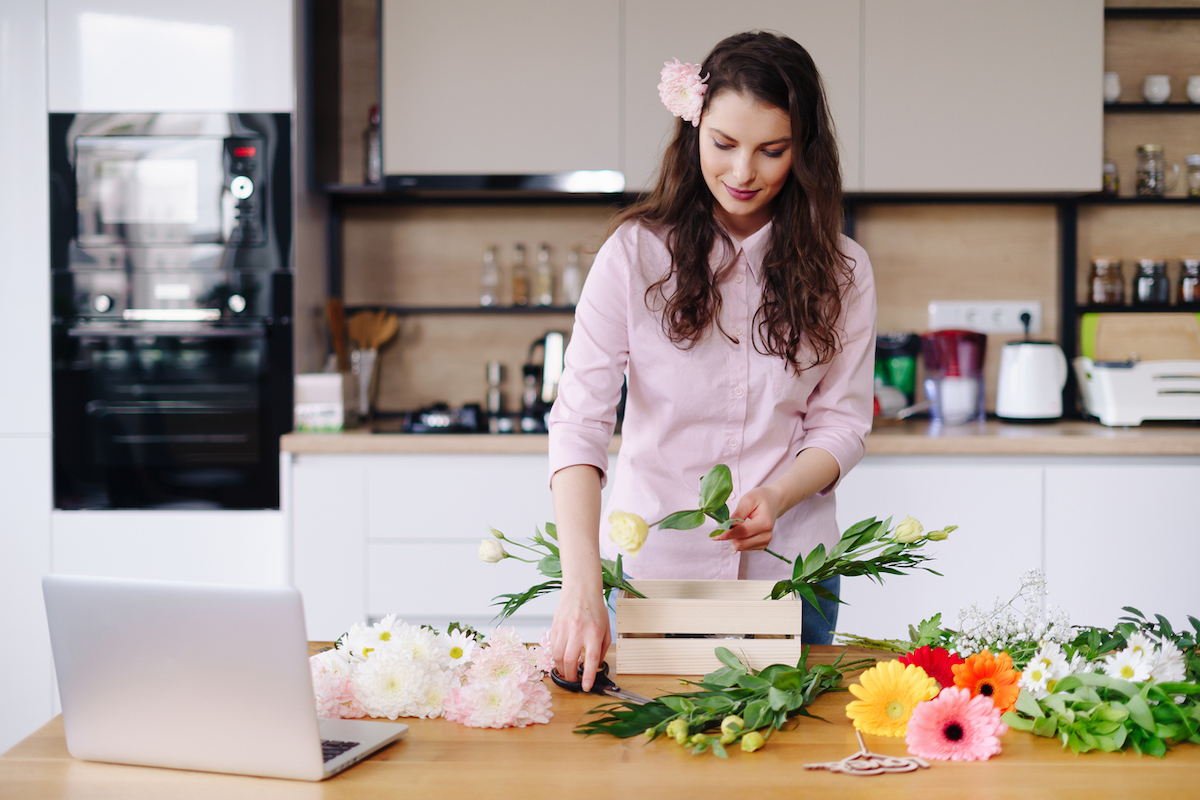
Learn the Fundamentals of Floral Design
If you’re a gardener, you already understand some of the basics of color, symmetry, balance, and proportion. You’re also familiar with many types of flowers. But you don’t have to garden to be able to design flowers like a pro—and even if you do grow your own flowers, you’ll need to learn a few more things in order to create dazzling floral arrangements, such as how to handle flowers and help them last after cutting.
The following guides provide the fundamentals that will hone your skills. They also offer some ideas that can help you create attractive arrangements that bring lasting enjoyment.
FOR MORE ON ARRANGING FLOWERS:
➤ How to Arrange Flowers Like a Floral Designer
➤ The Best Online Floral Design Classes
➤ 6 Ways to Keep Cut Flowers Fresh Longer
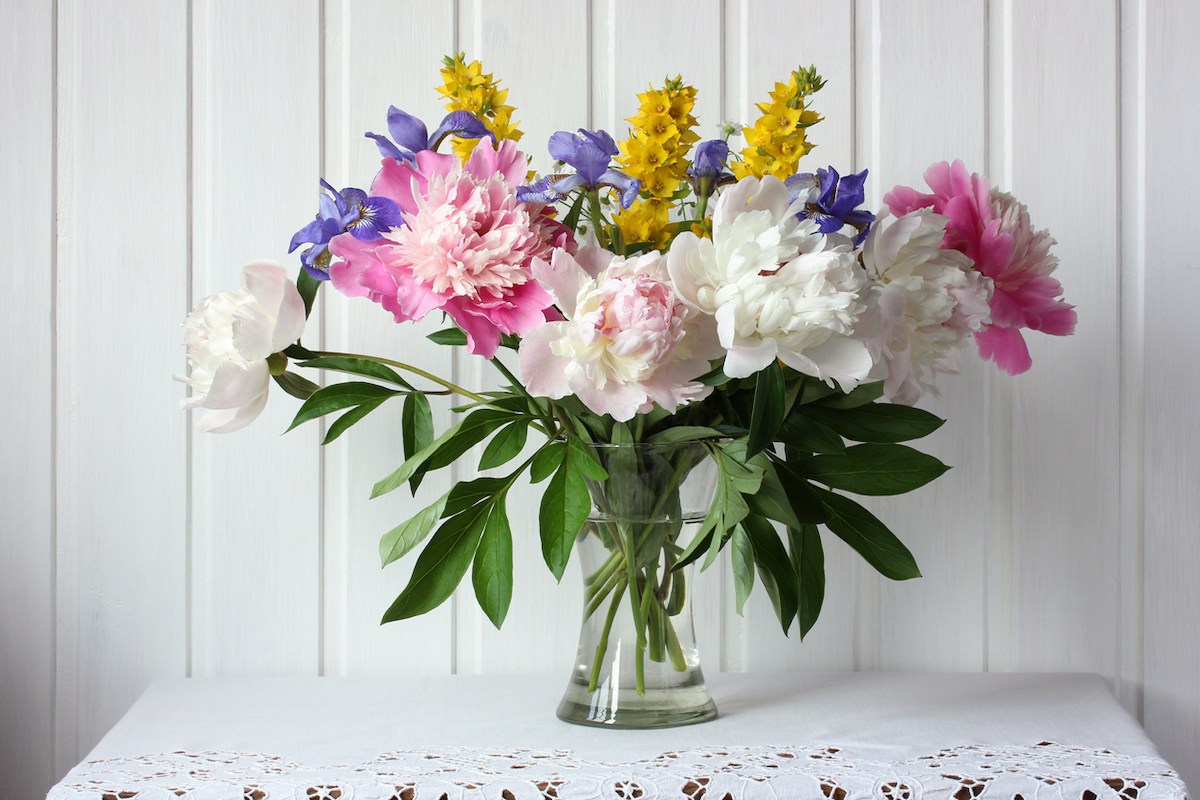
Branch Beyond the Bouquet
Fresh flowers in a vase or vessel are beautiful, but there are other ways to use fruit, flowers, and greenery from your garden to create a diverse array of designs. Wreaths, garlands, and swags are easily produced décor that can be built of evergreen boughs, grapevines, or other garden material.
Who says your arrangements have to be restricted to flowers? Fresh produce from your garden can form an attractive and edible centerpiece. Succulents make long-lasting displays. Herbs add fragrance and texture to your designs. And if the mood to create strikes you during cold weather, dry flowers keep the arrangements going year-round.
All it takes is a little inspiration and instruction.
FOR MORE FLORAL DESIGN IDEAS:
➤ How to Dry Flowers: 5 Easy DIY Methods
➤ Create Indoor Decor From Your Outdoor Garden
➤ 13 DIY Summer Wreath Ideas
